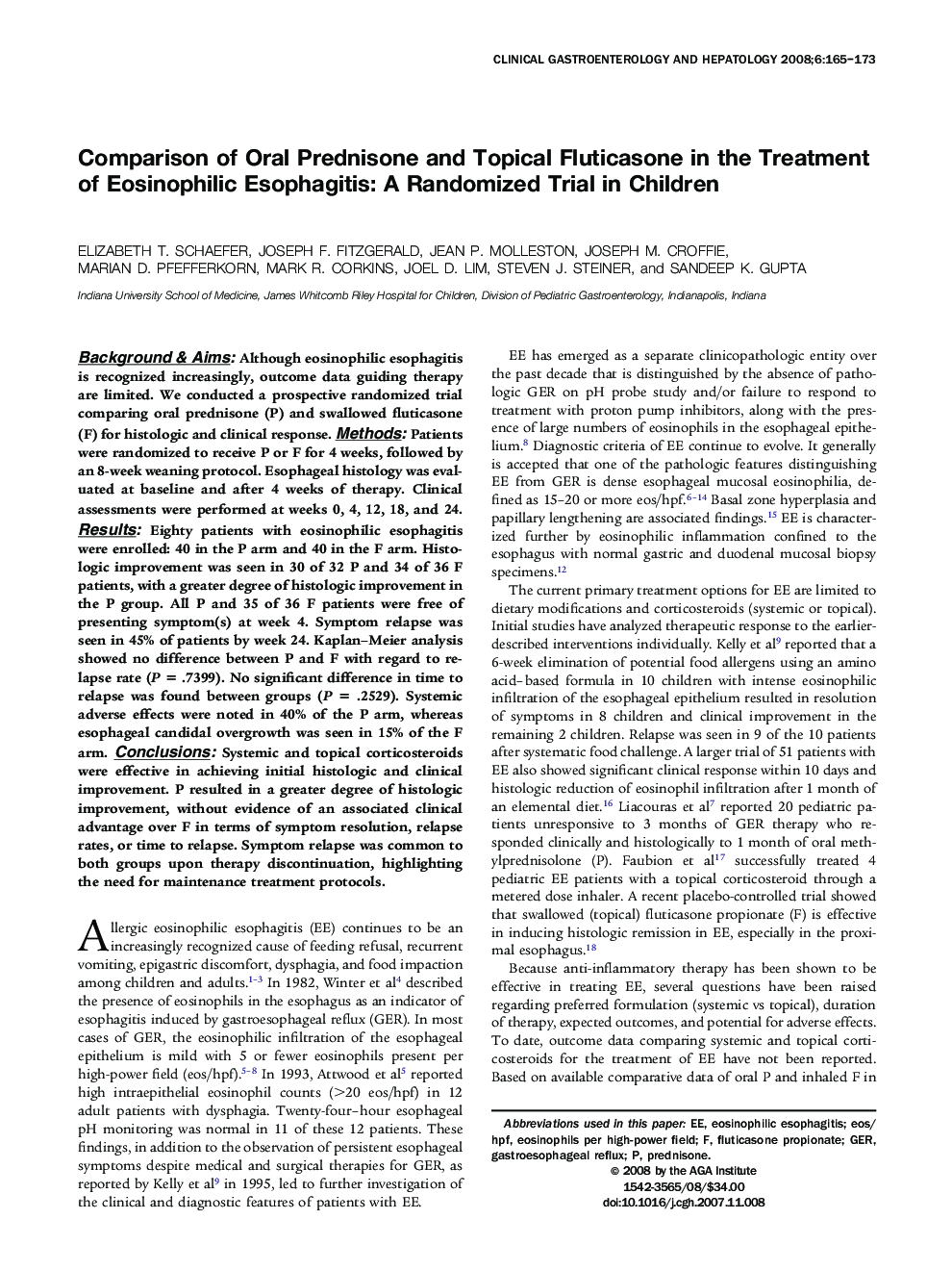| Article ID | Journal | Published Year | Pages | File Type |
|---|---|---|---|---|
| 3284492 | Clinical Gastroenterology and Hepatology | 2008 | 9 Pages |
Background & Aims: Although eosinophilic esophagitis is recognized increasingly, outcome data guiding therapy are limited. We conducted a prospective randomized trial comparing oral prednisone (P) and swallowed fluticasone (F) for histologic and clinical response. Methods: Patients were randomized to receive P or F for 4 weeks, followed by an 8-week weaning protocol. Esophageal histology was evaluated at baseline and after 4 weeks of therapy. Clinical assessments were performed at weeks 0, 4, 12, 18, and 24. Results: Eighty patients with eosinophilic esophagitis were enrolled: 40 in the P arm and 40 in the F arm. Histologic improvement was seen in 30 of 32 P and 34 of 36 F patients, with a greater degree of histologic improvement in the P group. All P and 35 of 36 F patients were free of presenting symptom(s) at week 4. Symptom relapse was seen in 45% of patients by week 24. Kaplan–Meier analysis showed no difference between P and F with regard to relapse rate (P = .7399). No significant difference in time to relapse was found between groups (P = .2529). Systemic adverse effects were noted in 40% of the P arm, whereas esophageal candidal overgrowth was seen in 15% of the F arm. Conclusions: Systemic and topical corticosteroids were effective in achieving initial histologic and clinical improvement. P resulted in a greater degree of histologic improvement, without evidence of an associated clinical advantage over F in terms of symptom resolution, relapse rates, or time to relapse. Symptom relapse was common to both groups upon therapy discontinuation, highlighting the need for maintenance treatment protocols.
